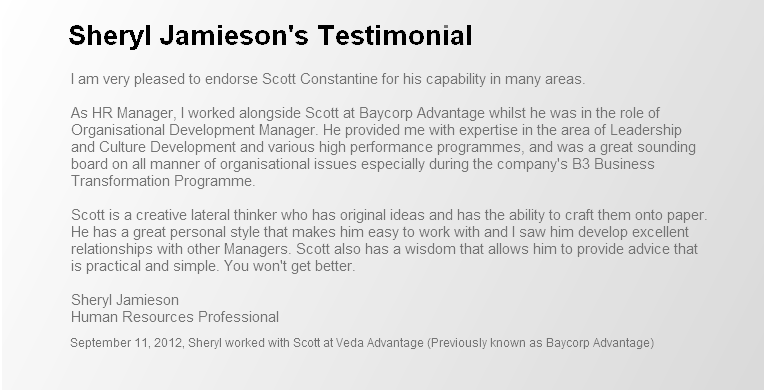Make Your Testimonials Resonate With Prospects





by Tony Vidler ![]()
![]()
![]()

Testimonials are great marketing, but they are losing their effectiveness a little if you still do them conventionally. All is not lost with testimonials however, as one small change CAN make them resonate with your target audience a little better.
Consumers are not silly and they know we are never going to be silly enough ourselves to put up a testimonial which is not complementary. Have you ever seen a testimonial put up by any business on its’ own controlled media that said something like “these guys really sucked“? So consumers know that we are generally only going to put up testimonials that are favourable, and as a consequence they tend to not read that many of them, if any at all.
The following would be a reasonably typical example of the sort of testimonial that most professionals are putting on their websites and so forth, and in itself there is nothing really wrong with it:

It is sort of what you expect to see in a testimonial isn’t it? Which means that it falls a little bit flat in terms of impressing anyone especially, or hitting a chord with a particular type of client. Compare it to the following:

I don’t know any of the people involved in this testimonial, so I certainly have no particular interest in promoting any of them in any way. It is a superb example of a great testimonial for a professional which I found with a quick google search, and there are a number of elements which other professionals could, and should, learn from if they want their own testimonials to resonate with a target market.
The 1 big thing which makes this great is the positioning of the person who gave the testimonial: “Human Resources Professional“. THAT resonates with a target market because it helps them realise that the person giving the testimonial is perhaps someone like them,and that implicitly conveys immediately that if this professional helps people like them, then he would be a good choice to be the person to help them too. It resonates in other words.
That is a lot more powerful than the testimonial without any positioning of the person who provided it.
There are some other great attributes to this second testimonial though, such as:
What we are trying to achieve with testimonials is to provide confidence to prospective clients that others like themselves have had a good professional experience with us. A key element in helping them to gain confidence that you may be the right professional for them is to ensure that you give as much information as you can about “who” is providing the testimonial.
Who says it is much more important than what is actually said.
Comments (0)